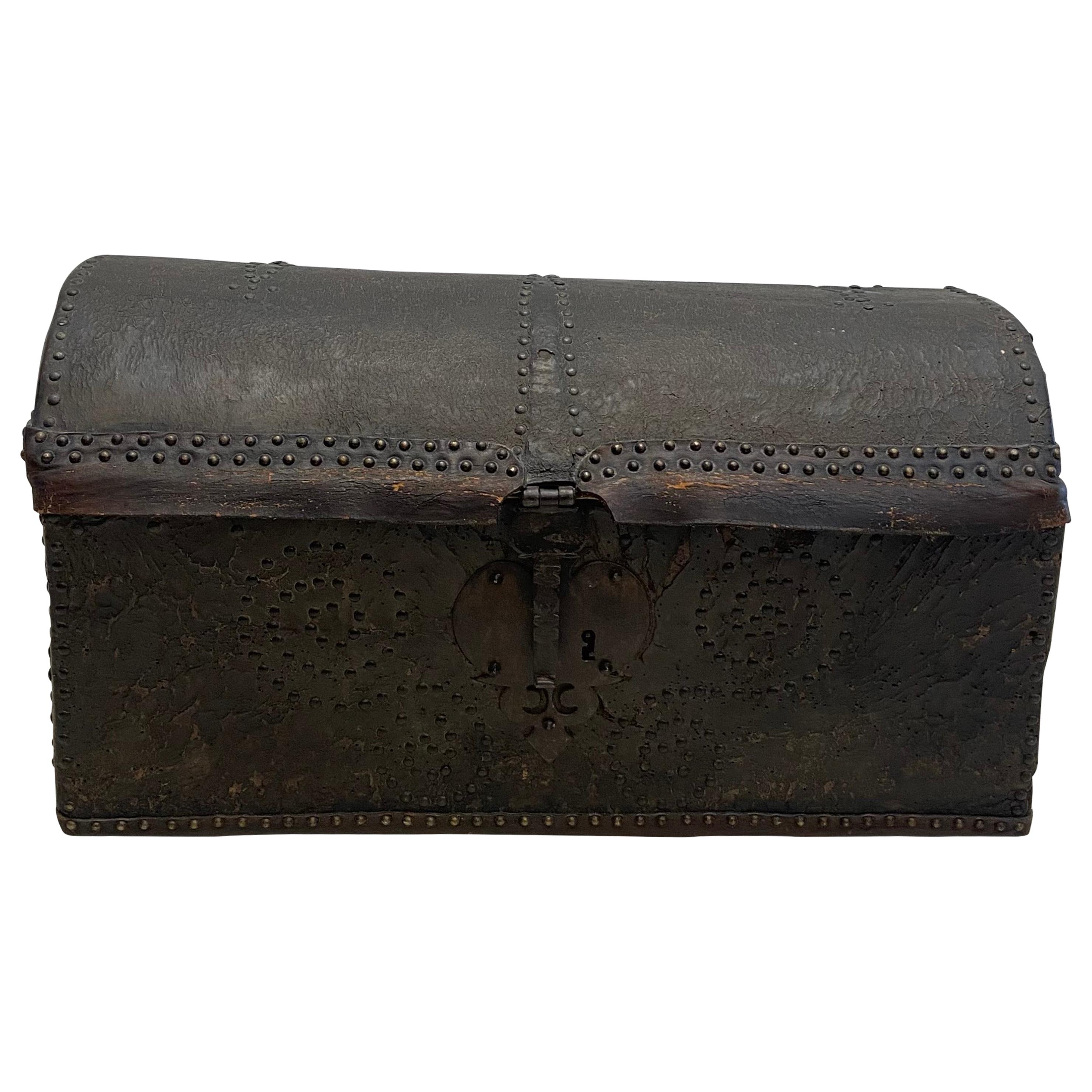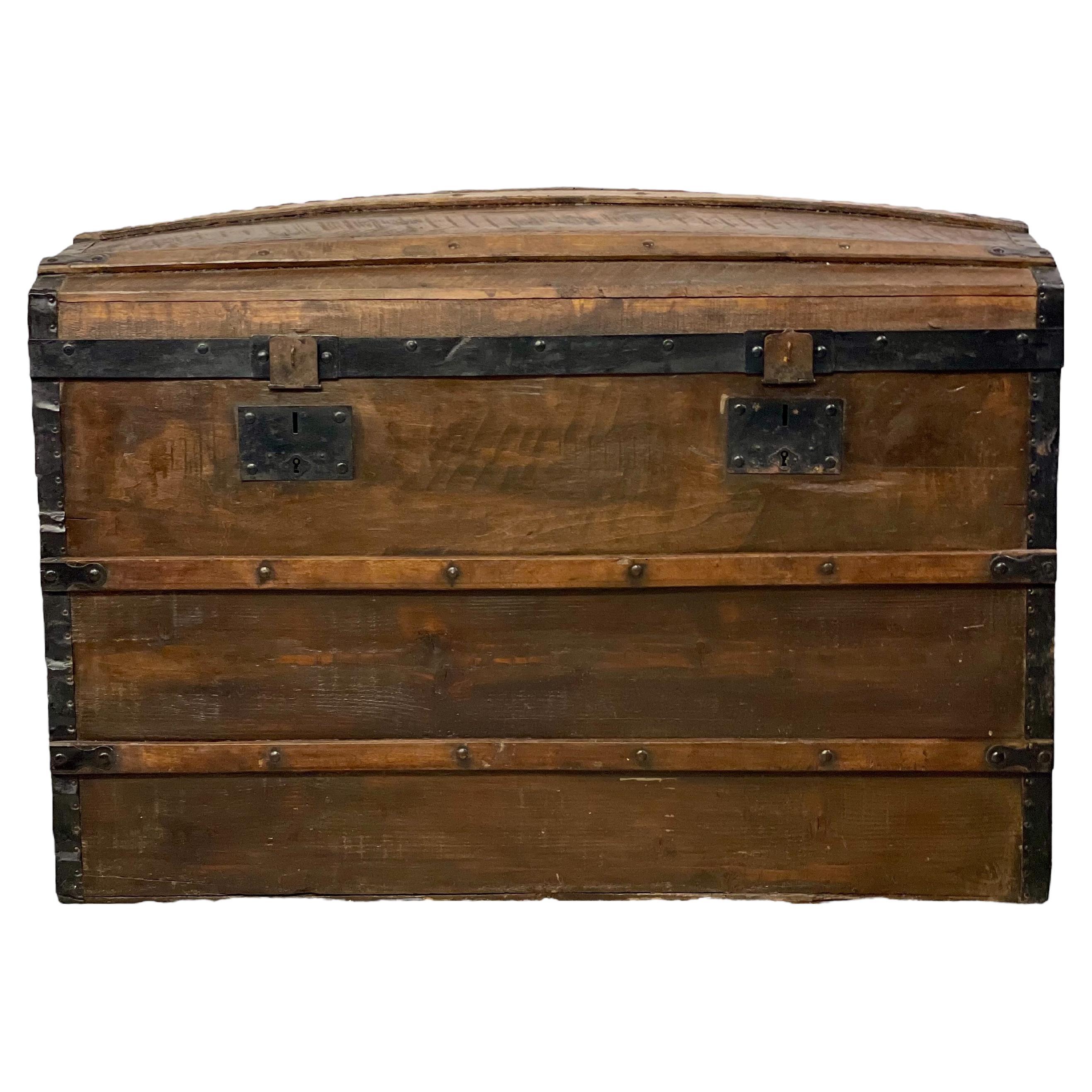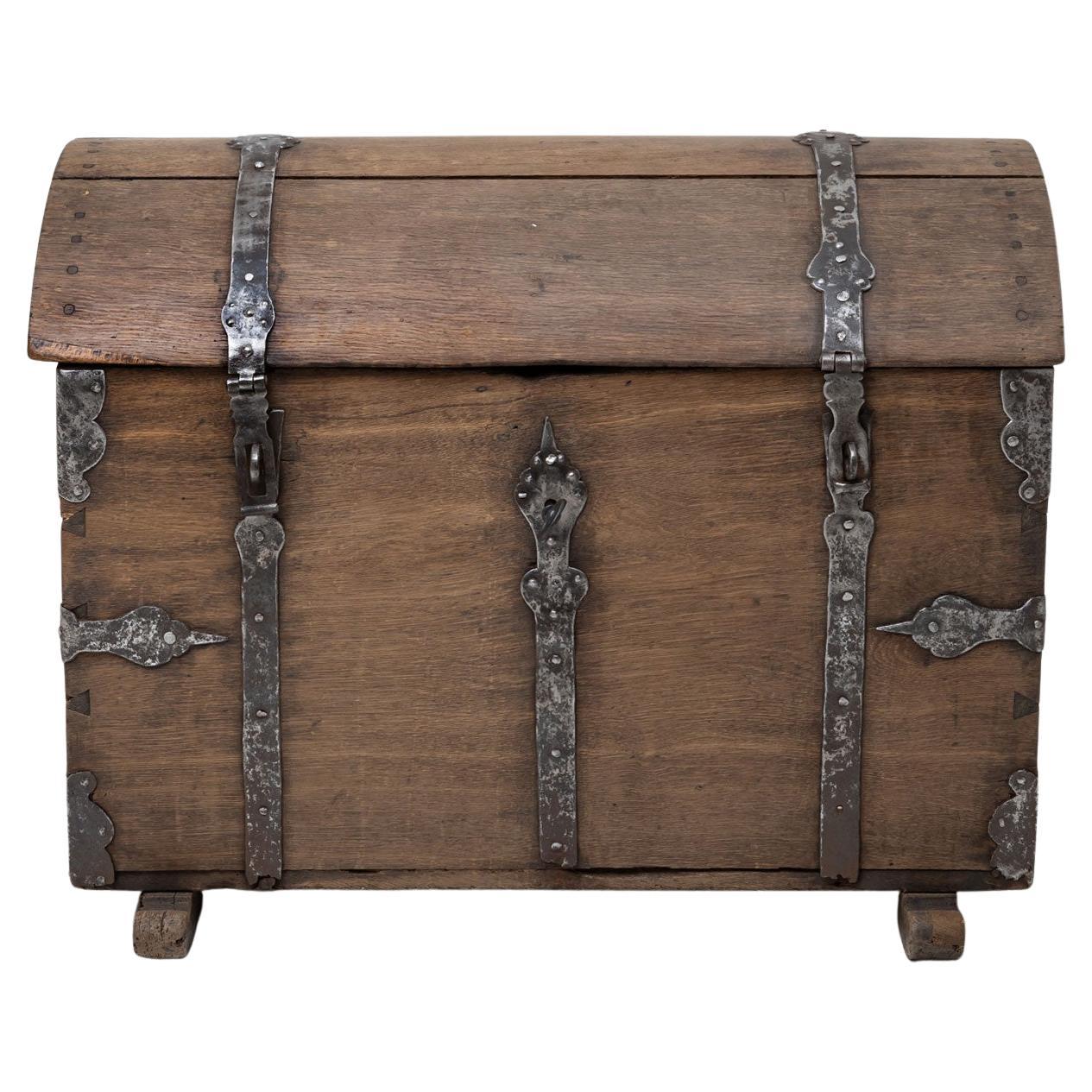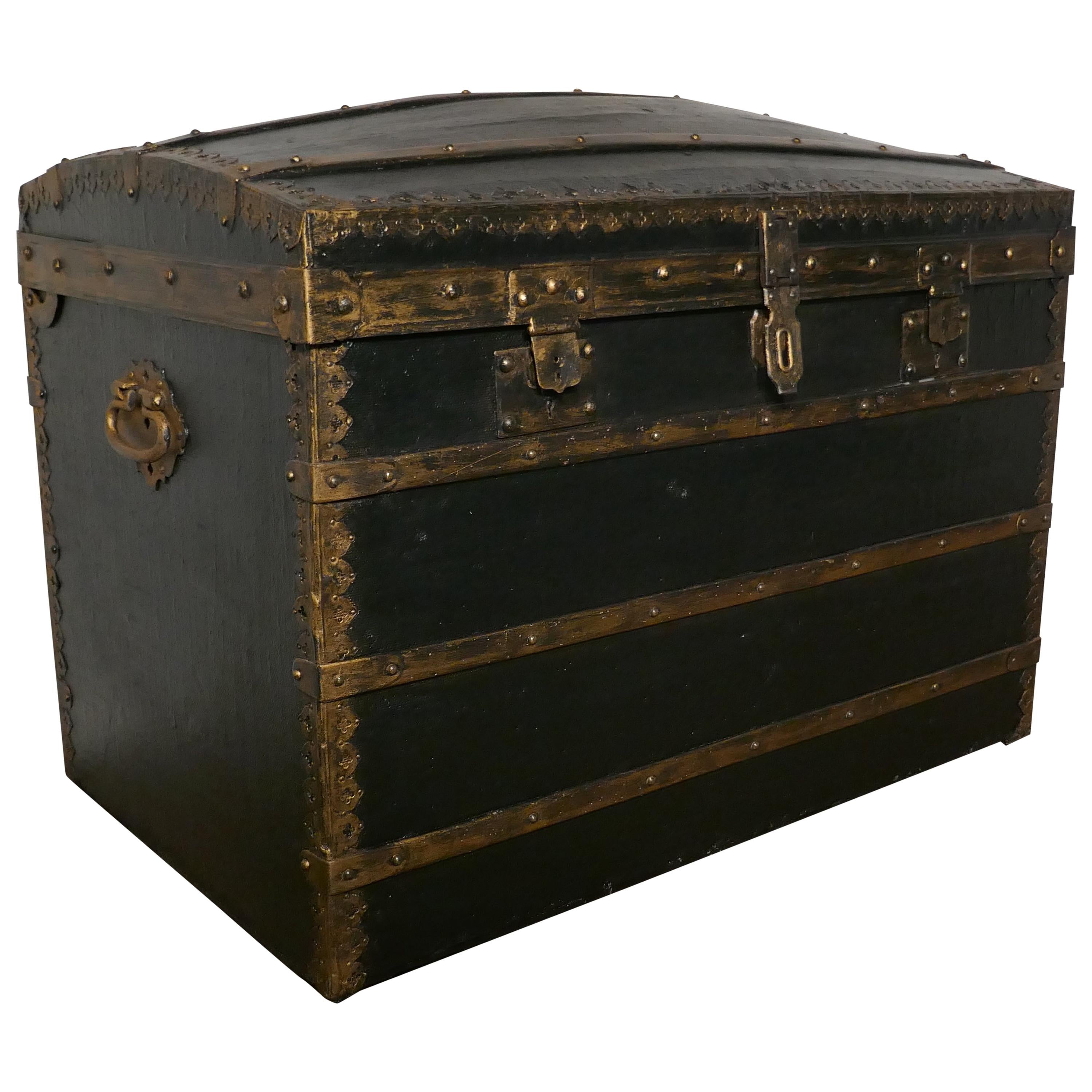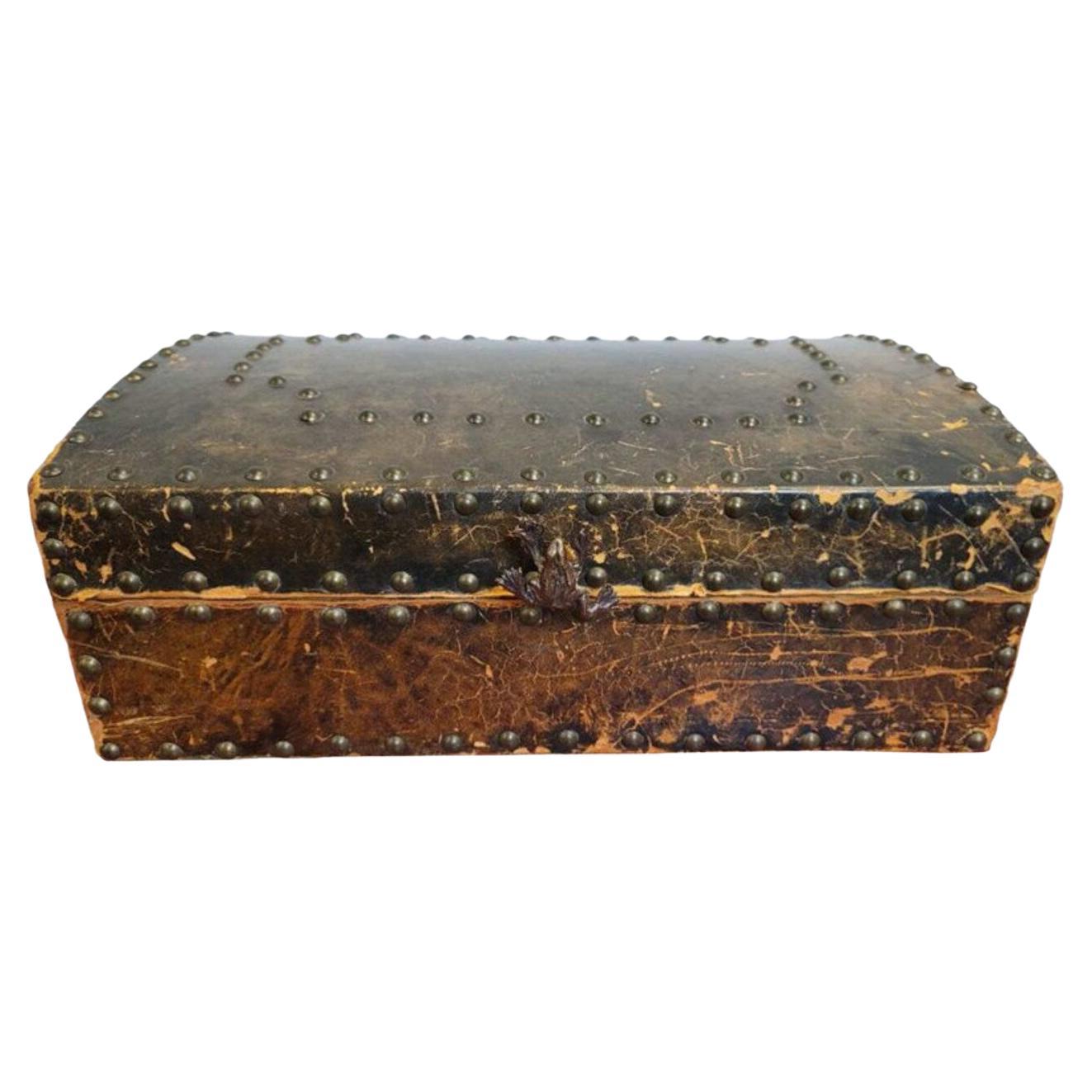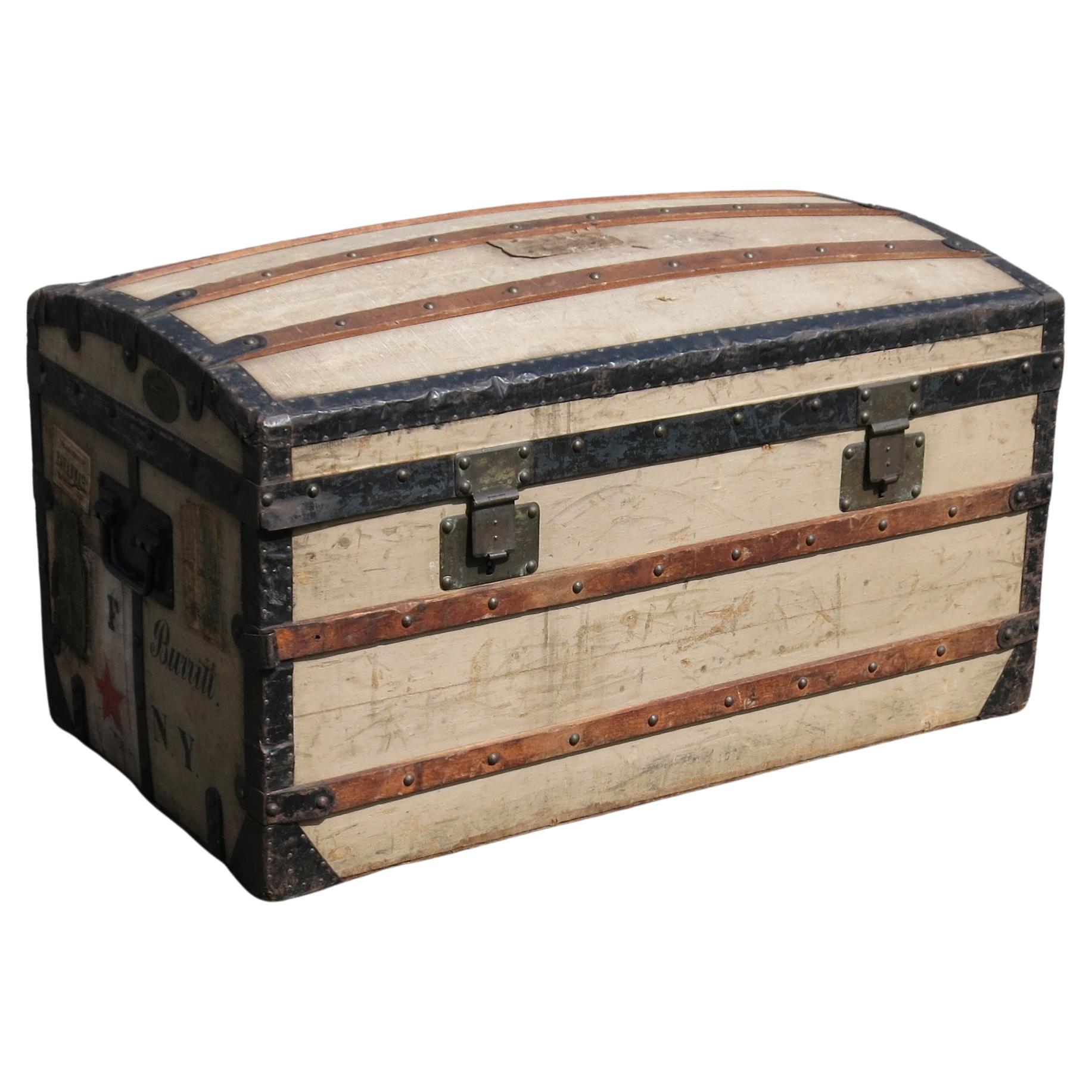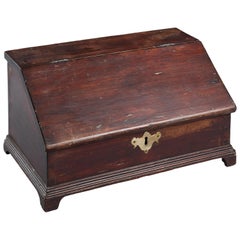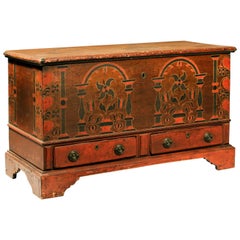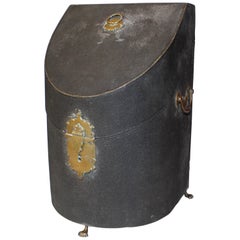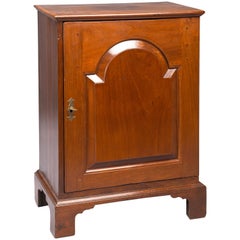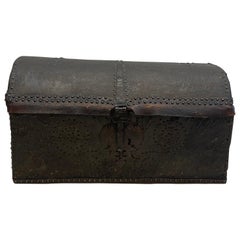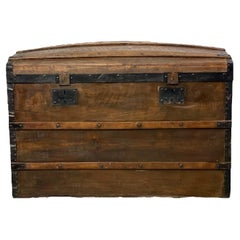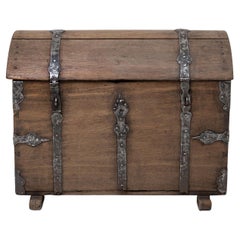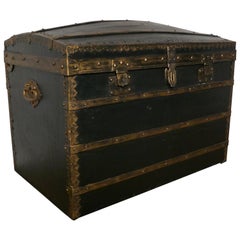Want more images or videos?
Request additional images or videos from the seller
1 of 3
Domed Chagrin Casket
$9,500
£7,420.25
€8,411.74
CA$13,619.31
A$14,939.64
CHF 7,816.65
MX$177,811.50
NOK 98,729.09
SEK 92,609.66
DKK 62,823.60
About the Item
Very rare wood, iron and sharkskin domed casket on ball feet. Ornamented with iron strap work and double hasp lock. Silk damask interior.
Ex collection of Fritz Phillips.
- Dimensions:Height: 4.75 in (12.07 cm)Width: 7 in (17.78 cm)Depth: 3.5 in (8.89 cm)
- Style:Renaissance (Of the Period)
- Place of Origin:
- Period:Late 17th Century
- Date of Manufacture:Unknown
- Condition:
- Seller Location:West Chester, PA
- Reference Number:1stDibs: LU87416076253
About the Seller
No Reviews Yet
Recognized Seller
These prestigious sellers are industry leaders and represent the highest echelon for item quality and design.
1stDibs seller since 2009
9 sales on 1stDibs
Typical response time: 15 hours
Associations
Art Dealers Association of America
- ShippingRetrieving quote...Shipping from: West Chester, PA
- Return Policy
More From This Seller
View AllDesk Box with Wonderful Scalloped Interior
Located in West Chester, PA
Queen Anne desk box with scalloped interior on bracket feet. Made of pine with old mahogany finish. Probably New York.
Category
Antique 18th Century American Queen Anne Decorative Boxes
Materials
Pine
Rare and Vibrant Painted Blanket Chest
Located in West Chester, PA
A rare and bright blanket chest in brilliant reds contrasted with blacks. The decoration is nicely painted with urns and flowers flanked by pillars and ...
Category
Antique 1780s American Folk Art Painted Furniture
Materials
Pine
English Queen Anne Shagreen Knife Box
Located in West Chester, PA
Rare Queen Anne with shagreen cover red fabric fitted interior for silver tableware set terminating in brass feet.
Category
Antique 18th Century English Queen Anne Knife Boxes
Queen Anne Mahogany Spice Box
Located in West Chester, PA
Queen Anne mahogany spice box on bracket feet with tombstone panel door. Probably English with oak secondary wood. Contains 16 drawers and two secret drawers.
Category
Antique 18th Century English Queen Anne Cabinets
Materials
Mahogany
Poplar Green Paint Decorated Blanket Chest
Located in West Chester, PA
With an old dry surface, this green painted blanket chest has a white tombstone with a brown edge painted in the centre with "Elisabeth Enderleinich, 1817" written upon it. A mid mol...
Category
Antique 1810s American Blanket Chests
Materials
Poplar
Pennsylvania Child's High Chest
Located in West Chester, PA
Delightful child's sized Pennsylvania high chest in red paint. Three over two over four drawer arrangement and resting on bracket feet, circa 1800. Tulip...
Category
Antique Late 18th Century American Chippendale Commodes and Chests of Dr...
Materials
Poplar
You May Also Like
18th Century Leather Dome Top Trunk
Located in West Palm Beach, FL
18th century leather dome top trunk in good condition… With brass nail heads and brass bail pulls at the sides… The front lock does not work but...
Category
Antique 18th Century Queen Anne Trunks and Luggage
Materials
Leather, Wood
19th Century Dome Top Trunk, Circa 1880
Located in LA CIOTAT, FR
Add a piece of history to your home with this stunning antique wooden trunk, dating from approximately 1880-1890. Handcrafted from solid pine, this charming piece was originally desi...
Category
Antique 19th Century French Trunks and Luggage
Materials
Iron
Baroque Domed Chest, First Half of the 18th Century
Located in Greding, DE
An Baroque domed chest crafted from oak, dating to the first half of the 18th century. The chest features intricate iron fittings and side handles, combining both decorative and func...
Category
Antique Early 18th Century German Baroque Blanket Chests
Materials
Iron
Victorian Canvas Dome Top Traveling Trunk
Located in Godshill, Isle of Wight
A Victorian canvas dome top traveling trunk
This trunk has a wooden carcass, and it is covered with black canvas oil cloth, it has Oak banding over the top, front and back with ...
Category
Antique Late 19th Century Victorian Trunks and Luggage
Materials
Canvas
Vintage European Leather Flatware Box Display Chest
Located in Forney, TX
A scarce Continental heavily distressed leather flatware storage box chest, 20th century, finely hand-crafted, rectangular solid wood case, domed ...
Category
20th Century European Decorative Boxes
Materials
Leather, Wood
Antique French Travel Trunk
Located in Newtown, CT
Antique French Travel Trunk. Well made late 1800's. It measures 20" deep and high and 35.75" wide. Wear is consistent with age. Nice graphics and the handles are stamped LV.
Category
Antique Late 19th Century French Victorian Trunks and Luggage
Materials
Canvas
More Ways To Browse
17Th Century Casket
Iron Casket
Italian Music Boxes
Japanese Trinket Box
Limoges France Peint Main
Mary Box
Meissen Box
Silver Keepsake Box
Small English Boxes
Vintage Alpaca Mexico
Vintage Paper Mache Boxes
Wood Crate Box
24k Gold Boxes
Antique Bible Box
Antique Correspondence Box
Antique Leather Bottles
Antique Lunch Boxes
Antique Wood Tool Boxes
